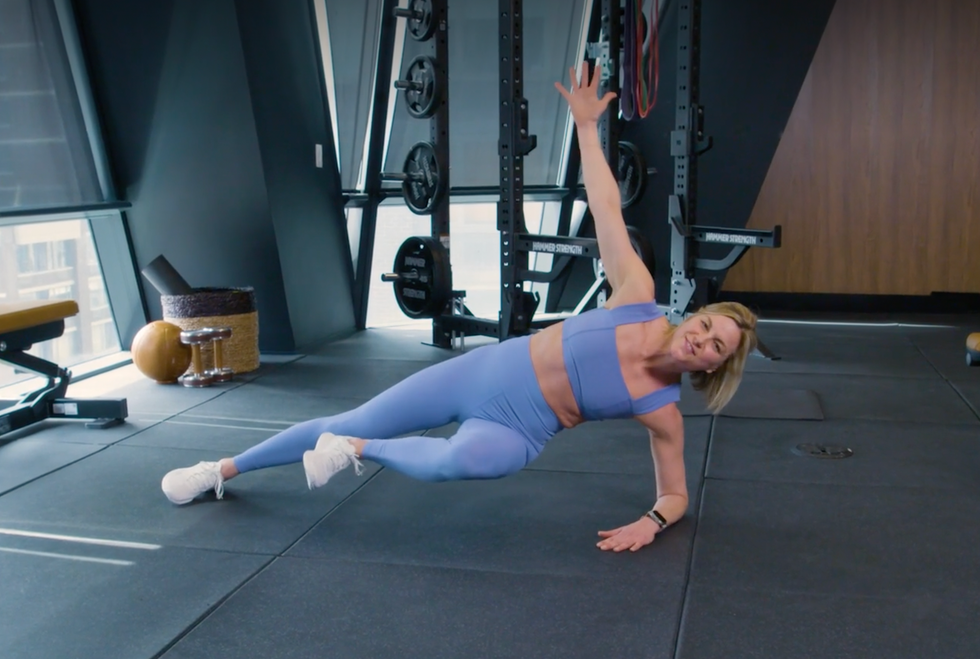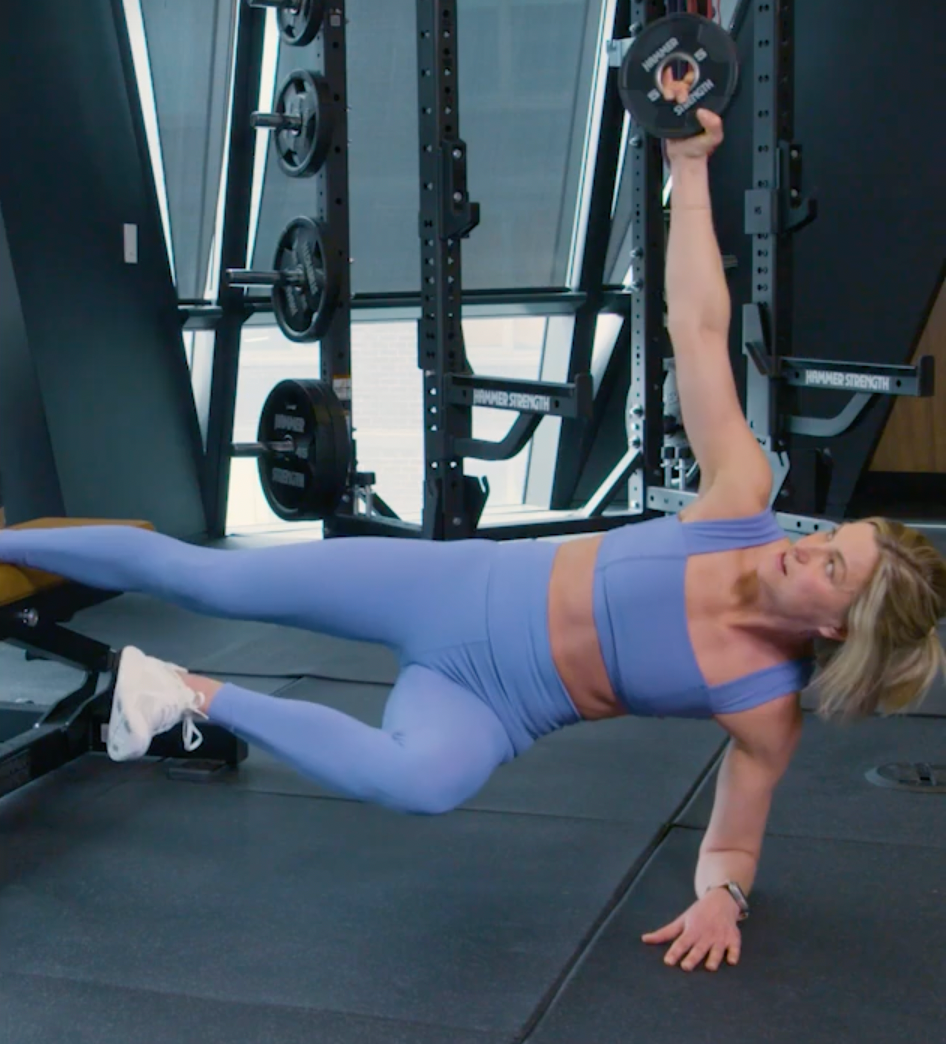
PLANKS ARE ABOUT as straightforward as an exercise gets. You brace your core, squeeze your glutes, and hold your position for as long as you can maintain tension (which might be much shorter than you expect).
You can mix things up by shifting your weight to either arm for a side plank, which targets your obliques—but the bracing remains (mostly) the same. If you make a few adjustments, however, you can turn the modest side plank into a surprisingly tough exercise that challenges your lower body and back.
How to Do the Side Plank

- Lie on one side with your legs straight and prop up your upper body on your forearm. Raise your hips so your body forms a straight line from your head to your heels.
- Brace your abs and squeeze your glutes to hold the position.
Men’s Health Fitness Director Ebenezer Samuel, C.S.C.S. and Women’s Health Editor-in-Chief Liz Plosser demonstrate three side plank alternatives, based on the challenging Copenhagen plank. You’ll lift your leg to throw yourself off balance and challenge your adductors; it’s far harder than the standard side plank, but also more engaging and versatile.
3 Copenhagen Plank Variations
Sub one of these variations into your next core session or at the end of your other workouts. Start with three sets for each and aim to add more time each week.
Grounded Copenhagen Plank

Why: The Copenhagen plank is a side plank variation that challenges your core (like any plank will) and adductors as your hip muscles support your “floating” leg. This is a difficult movement that demands balance and strength. Don’t be discouraged if you can’t nail it right away.
How to Do it:
- Lie on your side with your forearm resting on the ground directly under your shoulder and your legs extended and stacked on top of one another. Lift your hips off the ground to form a straight line from head to toe.
- Draw your bottom leg toward your chest and hold this position for 10 to 15 seconds.
Elevated Copenhagen Plank

Why: Elevating your leg on the bench makes it so your entire torso is parallel to the ground. “This makes it that much more challenging for your abs and inner hip adductors,” says Samuel.
How to Do it:
- Lie on your side with your forearm resting on the ground directly under your shoulder and your legs extended and stacked on top of one another.
- Place the foot of your top leg on a bench set perpendicularly behind you. Lift your hips up so your body forms a straight line from heel to head; lift your bottom leg off of the ground by drawing your knee toward your chest.
- Hold this position for 10 to 15 seconds.
Elevated Copenhagen Plank With Load

Why: Adding load and rotation to the Copenhagen plank turns the movement from static to dynamic, further challenging your balance, core strength, and back muscles. “This is going to push your abs to the limit, and it’s going to keep attacking your inner thighs,” Samuel says.
How to Do it:
- Lie on your side with your forearm resting on the ground directly under your shoulder and your legs extended and stacked on top of one another.
- Place the foot of your top leg on a bench set perpendicularly behind you. Lift your hips up so your body forms a straight line from heel to head; lift your bottom leg off of the ground by drawing your knee toward your chest.
- Hold a light weight plate in the hand of your top arm. Extend your arm out in front of you.
- Raise your arm back so it’s perpendicular and your body makes a T-shape. That’s one rep; do 10 reps each side.
Advertisement – Continue Reading Below
Build Your Abs
Advertisement – Continue Reading Below
Advertisement – Continue Reading Below
